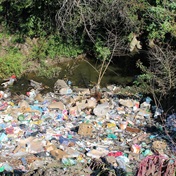
This week, as the country moved to Level 3 lockdowns with the economy gradually opening up, two documents surfaced that intrigued me.
The first document emerged from the business rescue team at South African Airways. The team – which was assembled in December 2019 – has become more famous in recent times for its failure to produce any rescue plan.
The law under which they draw their mandate, rightly calls for a speedy process in business rescue matters. The reason urgency is important in business rescue proceedings, primarily due to the fact that organisations that enter business rescue are already in some form of distress. Burdening them with a lengthy and costly process would therefore be antithetical to the entire concept of rescuing a business from a financial cliff.
Secondly, the process suspends all pre-existing obligations, which simply means that suppliers and service providers who would have engaged with a distressed company with the hope that payments would be honoured on time; have to then wait for the rescue process to give guidance on whether they can be paid at all.
The consequence of that moratorium is that companies that have high cash flow exposure to a distressed entity feel the pinch of any delays in the rescue process. The amounts due to them – whilst not being disputed – become a remote possibility with every passing day when other costs are prioritised. Failing to table a rescue plan on time was therefore a disaster not just for the internal stakeholders at SAA but for every entity that was owed by the airline.
The most prominent of the affected creditors – Comair – had spent 14 years fighting SAA and finally winning a settlement which suddenly looks like a false dawn. The business rescue team has allocated a figure of R600 million to all unguaranteed pre-existing creditors. This amount is distinct from the amounts owed to those lenders and creditors who have a state guarantee to sort them out. Those with the state guarantee, are primarily the banks which theoretically had no business lending to an entity that regarded the publication of financial statements as an administrative option. Yet for as long as the state committed itself to the idea of owning and running an aviation asset, guarantees were made available to entice the lenders to advance more money to SAA.
The sum of these exposures – R16.4 billion – forms part of the rescue team’s calculations and dominated conversations this week after the draft plan was leaked. The Democratic Alliance, in particular, referred to a R21 billion bailout which gave the impression that the business rescue team had determined that R21 billion is needed for their plan to succeed. This is slightly misleading, as the R16.4 billion had in fact been committed by the state long ago.
The incremental amount – accounting for the difference between the R21 billion total and the R16.4 billion – is the amount that the business rescue team can be held to account for. This is made up of R600 million for pre-existing creditors; plus two tranches of R2 billion earmarked for funding the retrenchment process of current employees and – more controversially – starting SAA version 2.0.
The shape of things to come
The commitment to pre-existing creditors is important for the various suppliers and service providers to SAA who have seen not only a key customer heading to business rescue, but every other customer in the aviation sector also being subjected to the lockdown. However, a key disclaimer relating to the R600 million is that it would be paid over a three-year period.
The consequence of this is that companies that are going to be allocated a share from the R600 million not only have to accept much less than what they are actually owed, but also have to wait to collect the reduced amount.
Another point of debate has been whether the allocation of R600m and R4 billion in any form is warranted. The difficult aspect of this conversation is the intersectional nature of the aviation value chain. Allocating R600 million to affected creditors may be the difference between survival and extinction for some of them.
Given the general economic fallout expected from the pandemic, a solution that seeks to pay over a three-year period may be more elegant than any alternative.
The R2 billion relating to funding the retrenchment process also polarises opinions. Those who feel that employees contributed to the woes of SAA by embarking on strike action towards the end of 2019 (as articulated by Minister Pravin Gordhan), are likely to be less empathetic to the plight of workers. The alternative, however, is that any process that fails to cater to the displaced workers, will mean that the public purse has to be invoked either way. This may be through the addition of such workers to the resources allocated for current economic interventions, or the longer-term effects of dealing with increased unemployment.
Whether the state should then allocate another R2 billion to revive SAA will dominate the national discourse for days to come. That it can cost R2 billion to do so is nothing but a gross miscalculation by the business rescue team.
This is simply because absolutely no one knows when the aviation sector will start resembling anything similar to the scale that warrants the return to the skies of SAA and other airlines. Putting any number to the cost of the revival is just one more ill-advised step from the business rescue team. One has to empathise with them, though. Imagine a tabling a plan to reviving SAA with no figures attached to it. That would make their recent roasting in Parliament seem like a Valentine’s date.
But perhaps the rescue team knows enough about South African politics to know that an airline will exist whether we like it or not. If they had any doubts, the second document of interest released this week was the ANC’s latest attempt at convincing us it has an economic plan – the Economic Reconstruction document authored by Enoch Godongwana. It mentions the need for a National Aviation Industrial Strategy to be established.
That document obviously assumes that the key exhibit of what politicians believe to define the success or otherwise of a national aviation strategy – a National Airline – is going to be with us for years to come. And that is the type of reality that we all need to make peace with, for peace’s sake.
Khaya Sithole is an accountant, academic and activist who writes and Tweets on finance, economics and politics. Views expressed are his own.




 Publications
Publications
 Partners
Partners











